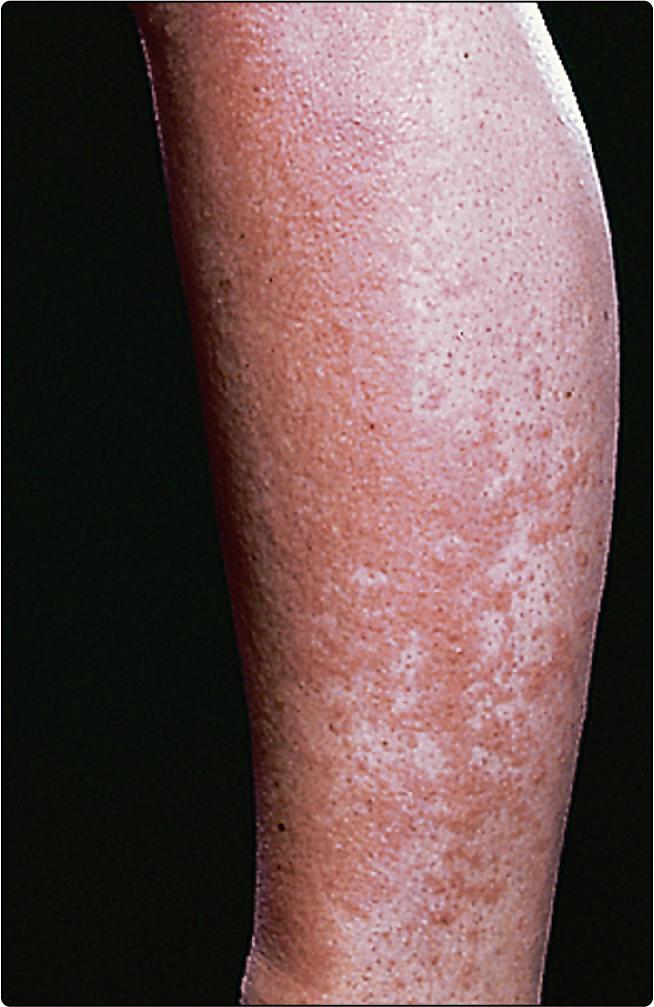Physical Address
304 North Cardinal St.
Dorchester Center, MA 02124
Polymorphic light eruption is often incorrectly referred to as ‘prickly heat’ (a different condition) and is characterized by pruritic papules, plaques and sometimes vesicles that last for days in light-exposed areas.
This is the commonest photodermatosis, and women are affected twice as frequently as men. Pruritic urticated papules, plaques and vesicles develop on light-exposed skin usually about 24 hours after sun or artificial ultraviolet (UV) exposure ( Fig. 26.1 ). It starts in the spring and may persist throughout the summer. The degree of severity is variable.

Photoallergic contact dermatitis, drug-induced photosensitivity and lupus erythematosus may need to be considered in the diagnosis of polymorphic light eruption.
The first-line therapy is to use sunscreens and protective measures. A short course of UV therapy (UVB or psoralen UVA [PUVA]) in the late spring can ‘harden’ the skin so that the patient is able to have a disease-free summer. Oral steroids are useful for acute flares but hydroxychloroquine can be used as a preventative measure.
Chronic actinic dermatitis is a rare UV-induced disease of unknown cause affecting middle-aged or elderly men who develop thick plaques of dermatitis on sun-exposed skin.
Histologically, the skin shows a dense lymphocytic infiltrate. Some of the lymphocytes may be atypical and suggest lymphoma (hence the name).
Become a Clinical Tree membership for Full access and enjoy Unlimited articles
If you are a member. Log in here